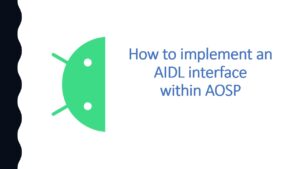Web App Structure
Android Web Apps utilize a WebView component to display the content and are effectively web pages enclosed within an Android application. The key components are HTML, CSS, and JavaScript, and they are rendered on the Android WebView, which functions as a kind of in-app browser.
Conversion to Android App
The transition from a web app to an Android app can be accomplished through various methodologies. A common approach involves utilizing frameworks like Apache Cordova or tools like Android Studio, which offer a streamlined process to convert and encapsulate the web app into an Android application. Here’s a brief overview of some methods:
- Native Wrappers
Utilizing Android Studio to create a native wrapper that encapsulates the web app, allowing the inclusion of a splash screen, navigation drawer, and application logo
- Frameworks
Apache Cordova is a notable framework that aids in creating mobile applications using HTML, CSS, and JavaScript by running a simple command-line utility.
- Progressive Web Apps (PWAs)
Introduced by Google, PWAs allow a seamless transition of web apps to mobile, enabling offline interaction and a native app-like experience on the home screen of smartphones.
- Ionic Capacitor
Particularly for React.js web apps, the Ionic Capacitor facilitates the conversion to Android or iOS apps, bridging web tech with native APIs.
Performance
If you’re building Android Web Apps, it’s important to know that they might be a bit slower than native apps. This is because they use web technologies instead of direct compilation. But, don’t worry! The key to keeping your users happy is making sure your app performs well. So, just keep in mind that performance is crucial for user engagement and satisfaction.
- Interpretation over Compilation
Native apps are compiled, whereas web apps are interpreted, which may lead to slower performance on mobile devices.
- WebView Performance
The rendering in WebView, especially image loading, can be sluggish and may require optimizations for improved performance.
Security Issues
When it comes to security in Android web apps, it’s all about getting the WebView component right. This nifty little tool allows developers to seamlessly embed web content into their apps, but if not handled properly, it can open the door to a host of security headaches.
One major issue with WebView is the risk of running malicious JavaScript code. If an app fails to sanitize user inputs and lets any old JavaScript run wild in the WebView, it’s like an open invitation to Cross-Site Scripting (XSS) attacks. These sneaky attacks can lead to stealing sensitive user info or messing with the app’s functionality.
Another headache is the dreaded Man-in-the-Middle (MitM) attack. When WebView loads web content over insecure HTTP connections, hackers have a field day intercepting and tinkering with the data flowing between the app and the server. This can lead to injecting nasty content, unauthorized data access, or even planting malware on the poor user’s device.
To avoid these security nightmares, devs need to play it smart. Things like validating and sanitizing user inputs, using TLS encryption for network communications, and keeping that WebView component up to date with all the latest security patches are a must. It also helps to set up content security policies and configure the WebView settings to lock down access to sensitive stuff.
Here are some of the most probable vulnerabilities because of WebView:
- HTTPS Enforcement:
HTTPS is enforced in Android 8.0 and above to secure communication, including within WebView. Developers might need to implement certificate pinning to further enhance security.
- Access to Local Resources:
Restrictions on access to local resources are advisable to prevent unauthorized access and other security issues.
- JavaScript Execution:
Enabling JavaScript in WebView can open avenues for cross-site scripting (XSS) attacks. Proper input sanitization and handling of external sources are crucial to preventing such attacks.
- JavaScriptInterface:
This feature allows powerful interactions between web content and the Android app but can lead to serious security issues if not carefully implemented.
- Cross-Site Scripting (XSS):
WebView might be vulnerable to XSS attacks, which can result in unauthorized access or data theft if not properly mitigated.
- Configuration Modifications:
Developers should understand the security implications of configuration changes in WebView to ensure that security features are not inadvertently disabled.



